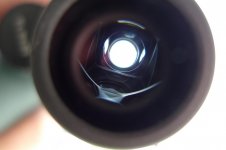Hi Henry
To me, in my experience, the sun near the field edge is the factor that produces the worst veiling glare I know. I am not talking about those internal reflections of parts Torview showed in post #85. I mean that "milky" veil, very conspicuous and unmistakable, in not well baffled binoculars or scopes, with the sun near the field edge.
To me, in my experience, the sun near the field edge is the factor that produces the worst veiling glare I know. I am not talking about those internal reflections of parts Torview showed in post #85. I mean that "milky" veil, very conspicuous and unmistakable, in not well baffled binoculars or scopes, with the sun near the field edge.






